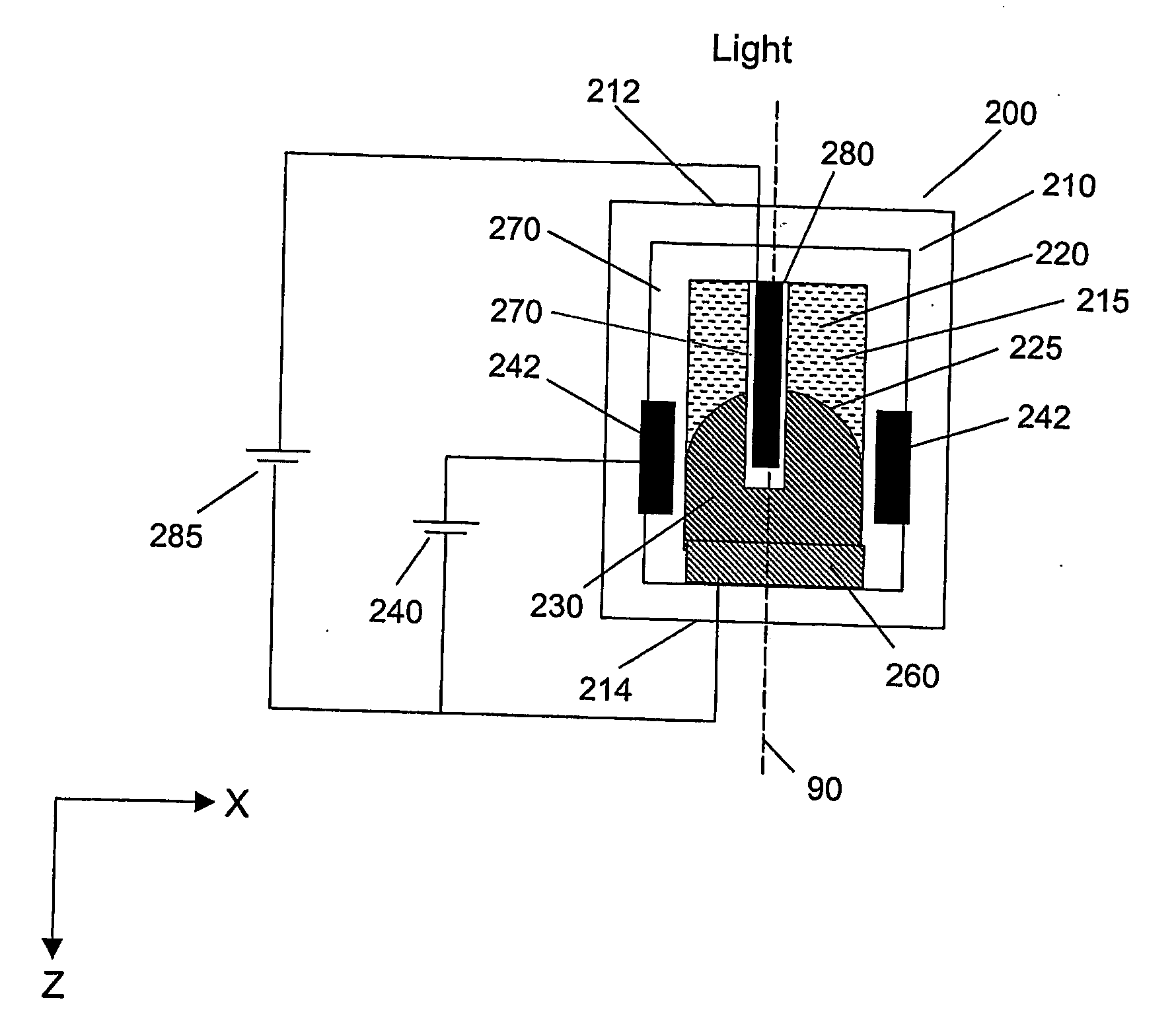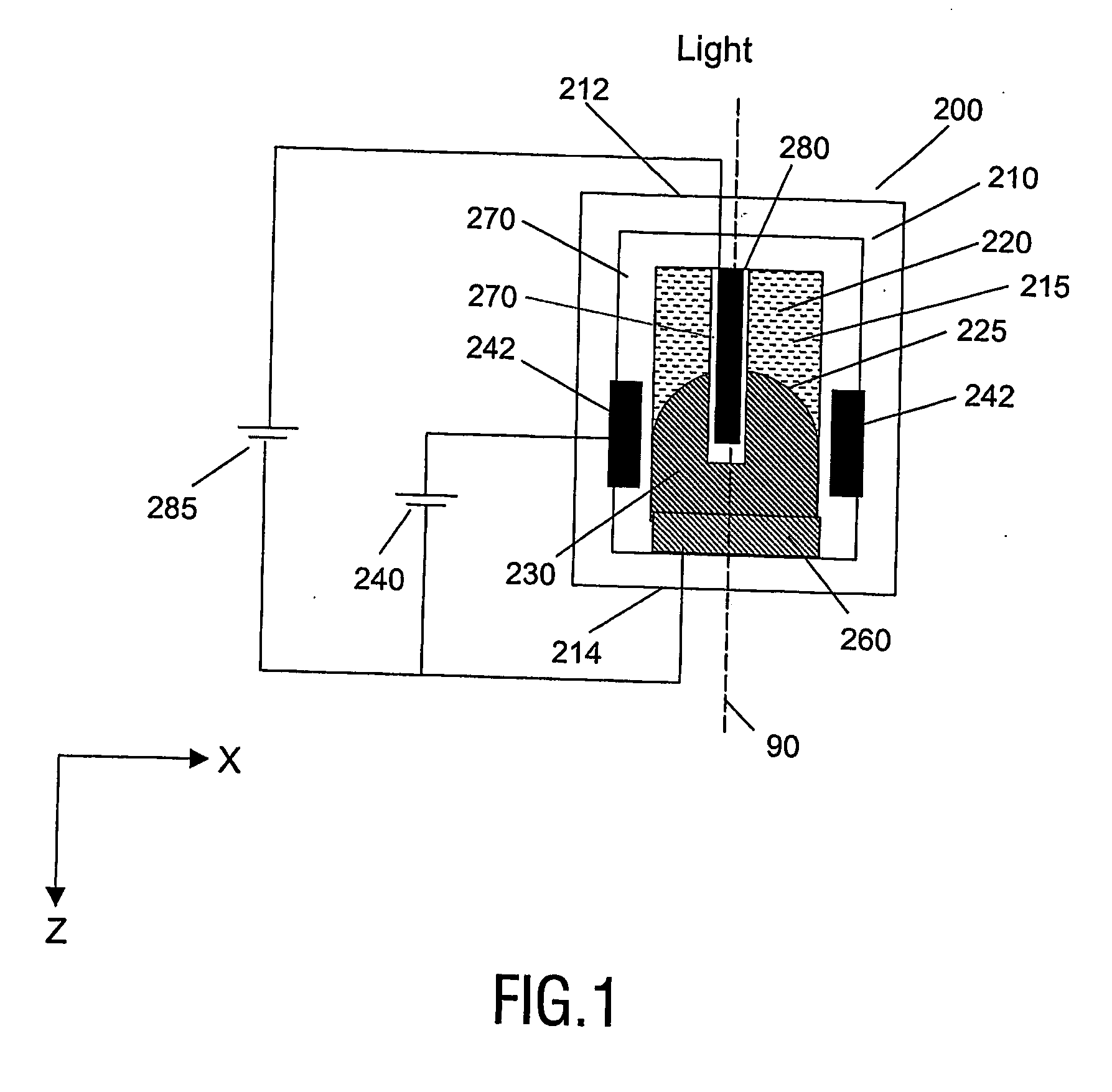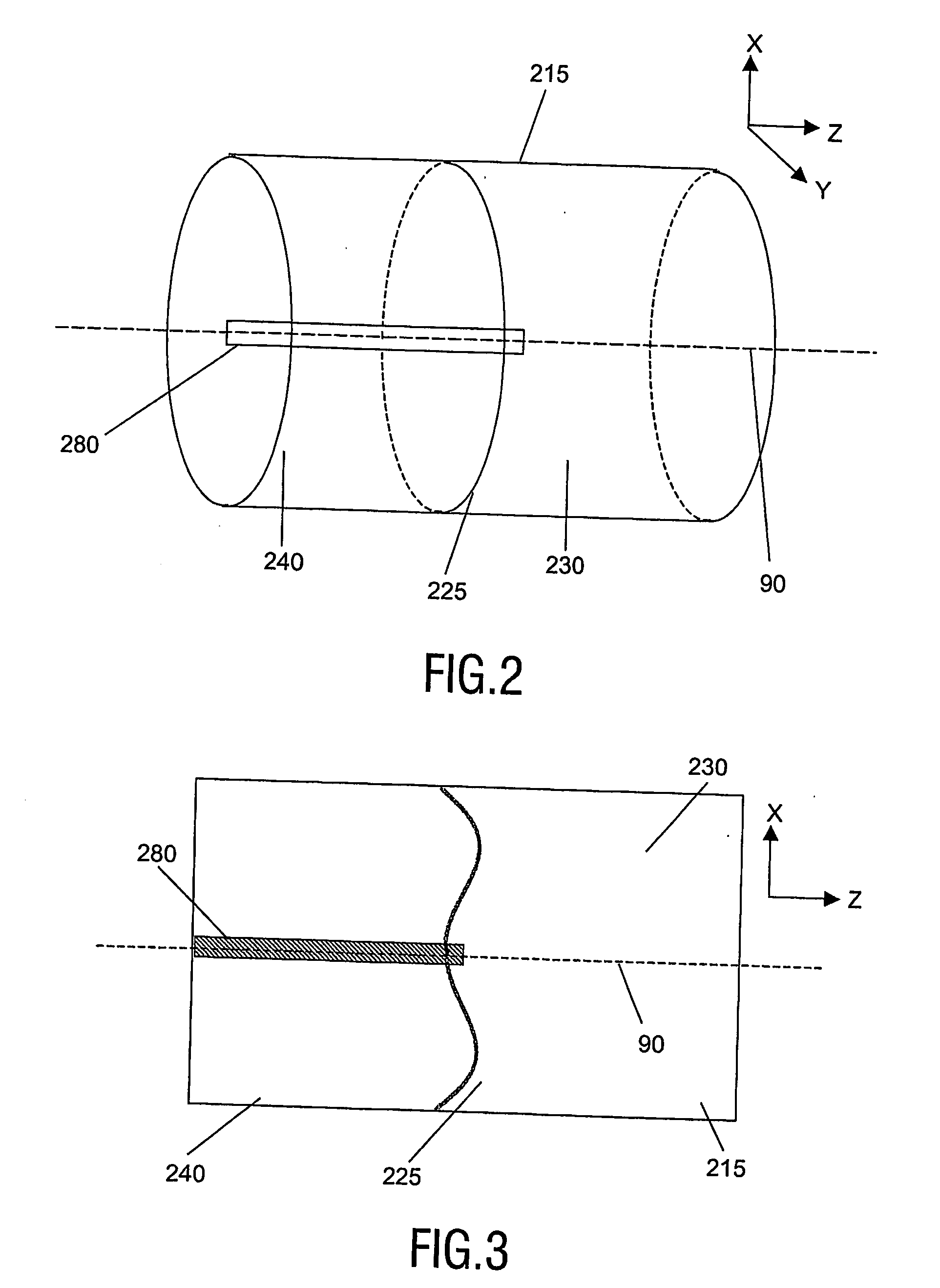Variable refractive surface
a refractive surface and variable technology, applied in the field of variable refractive surface elements, can solve the problems of deterioration of the readout signal, deterioration of the optical recording system readout signal, and reducing the performance of the optical system, so as to achieve the effect of cheap manufacturing
- Summary
- Abstract
- Description
- Claims
- Application Information
AI Technical Summary
Benefits of technology
Problems solved by technology
Method used
Image
Examples
Embodiment Construction
[0024] The present inventors have realised that an electrowetting device having a meniscus between two fluids of different refractive indices can be used be provide aberration compensation.
[0025] Electrowetting devices are devices that utilise the electrowetting phenomenon to operate. In electrowetting, the three-phase contact angle is changed with applied voltage. The three-phases constitute two fluids and a solid. Typically, at least one of the fluids is a liquid.
[0026] A fluid is a substance that alters it shape in response to any force, that tends to flow or to conform to the outline of its chamber, and that includes gases, vapours, liquids and mixtures of solids and liquids capable of flow.
[0027]FIG. 1 illustrates an element 200 in accordance with an embodiment of the present invention. The element 200 is an optical element (i.e. it is arranged to alter the properties of light incident upon the device), and in this instance the element 200 is arranged to provide a variable r...
PUM
| Property | Measurement | Unit |
|---|---|---|
| refractive surface | aaaaa | aaaaa |
| indices of refraction | aaaaa | aaaaa |
| meniscus perimeter | aaaaa | aaaaa |
Abstract
Description
Claims
Application Information
 Login to View More
Login to View More - R&D
- Intellectual Property
- Life Sciences
- Materials
- Tech Scout
- Unparalleled Data Quality
- Higher Quality Content
- 60% Fewer Hallucinations
Browse by: Latest US Patents, China's latest patents, Technical Efficacy Thesaurus, Application Domain, Technology Topic, Popular Technical Reports.
© 2025 PatSnap. All rights reserved.Legal|Privacy policy|Modern Slavery Act Transparency Statement|Sitemap|About US| Contact US: help@patsnap.com



